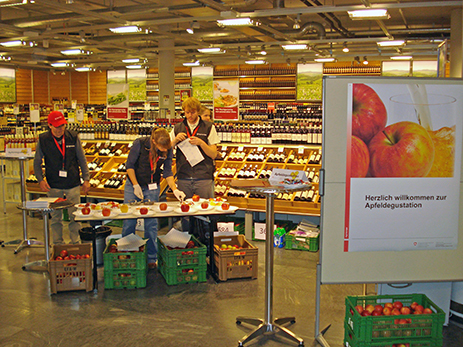The sensory analysis of food is an interdisciplinary scientific discipline encompassing the description, measurement and interpretation of product characteristics that can be perceived by human sensory organs. Here, the human being serves as a measuring instrument, comparable to other laboratory apparatus. Two different types of tests are distinguished in sensory analysis. Analytical or objective sensory analysis aims to generate data that are as neutral and unbiased as possible, and that are comparable to data yielded by chemical or physical measuring apparatus. Contrasting with this, so-called hedonic assessment emphasises the subjective impression, such as the popularity of or preference for a product. Accordingly, we also distinguish between two types of sensory testers: specifically trained individuals are used for objective tests, whilst untrained consumers are used for subjective tests.
Sensory properties are essential factors in the quality assessment of foods. Here at Agro-scope, we work and research in sensory analysis as an integral part of the quality chain “from field to fork”, and in the implementation of consumer needs “from fork to field”. Agroscope has several trained in-house panels (groups of testers) at its disposal. These panels are specifically trained to analyse the various agricultural products that constitute the core focus of Agroscope: cheese and other dairy products, fruit and vegetables, honey, meat and wine. One main task consists in creating so-called sensory product profiles by means of descriptive testing. The results obtained provide important information on the influence of certain production processes and/or parameters on sensorially perceptible properties. Where necessary, supplementary consumer tests are conducted that allow us to make statements on preferences and aversions. Linking consumer data with sensory analysis findings and data from chemical and physical studies via multivariate statistical methods provides information on what factors and ingredients significantly influence consumer acceptance. Identifying these key factors encourages an improvement in quality and agricultural product differentiation both at home and abroad.







